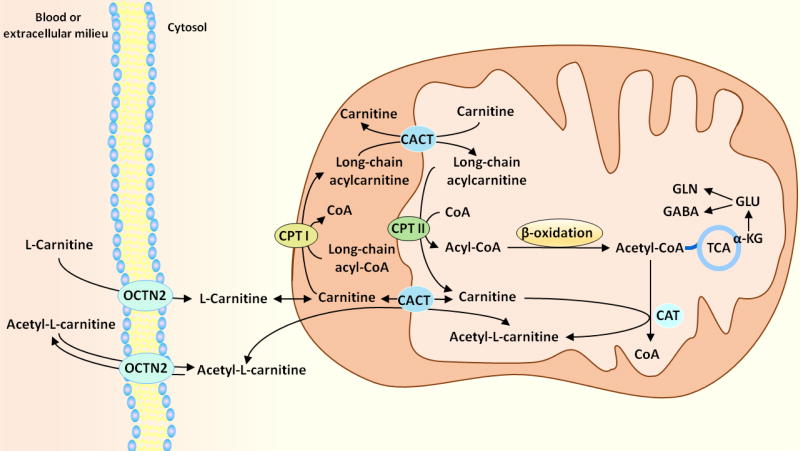Figure 2. The carnitine shuttle.
L-carnitine and acetyl-L-carnitine enter the cells from blood or extracellular milieu through the OCTN2 transporter. The enzyme acyl-CoA synthase (not shown) converts long chain fatty acids to fatty acyl-CoAs, which are subsequently converted to acylcarnitines by the enzyme carnitine palmitoyltransferase I (CPT I) localized in the outer mitochondrial membrane. Acylcarnitines cross the inner mitochondrial membrane via a transporter, the carnitine/acylcarnitine translocase (CACT), in exchange for free L-carnitine. The enzyme carnitine palmitoyltransferase II (CPT II), which is localized in the inner mitochondrial membrane, converts acylcarnitines back to acyl-CoAs and free L-carnitine, which exits the mitochondria and serves as the substrate for CPT I to form more acylcarnitine. Carbons from acyl-CoAs imported into the mitochondrial matrix through the carnitine shuttle can be oxidized for energy or metabolized via the TCA cycle and incorporated into glutamate, glutamine and GABA.

